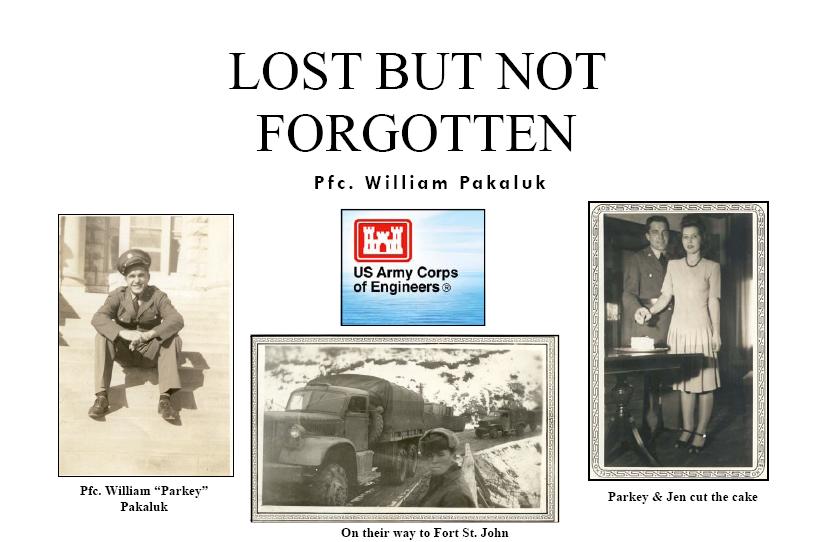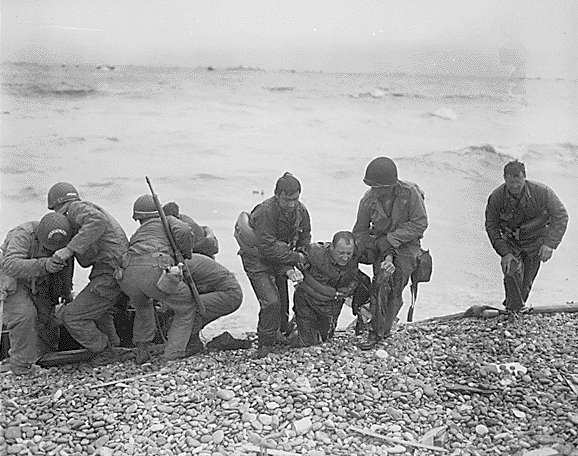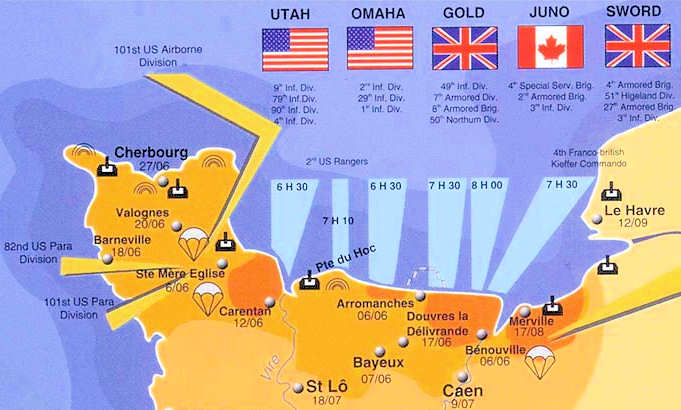Honoring our Veterans

William "Parkey" Pakaluk lost his life serving with the U.S. Army Corp of Engineers, 341stEngineers Regiment, while assigned to the construction of the Alaska Highway. Tragically, on May 14, 1942 at Charlie Lake, British Columbia a pontoon barge carrying 17 soldiers and equipment, needed in the construction, sank taking the lives of 12 soldiers. The Alaska Highway has been sited as one of the top 10 construction achievements of the 20th Century.
Roger Gregoire, president of the Northern Trails Historical Society, felt it important to honor the deaths of the 12 U.S. World War II soldiers who perished. Members of the Society invested much time and effort to locate archived documents in order to verify the facts of the historic incident. The monument, constructed of concrete and rock, will feature laser-etched display panels including; the factual account, the identity of the soldiers involved and recognition of the sacrifice of their lives to the war effort; and will include a map pinpointing the location of the accident.
Their efforts have been successful and the City of Fort St. John, B.C., along with Canadian and American dignitaries, former soldiers and families of the soldiers lost will officially dedicate a monument in memory of these men at the shores of Charlie Lake on May 21, 2008.
Construction of the Alaska Highway, formerly known as the Alcan (Alaska-Canadian) Highway, began on March 8, 1942. The highway winds its way through wilderness connecting Dawson Creek, B.C. and Fairbanks, Alaska. More than 11,000 American troops, including seven regiments of engineers, 16,000 civilian workmen from Canada and the United States and 7,000 pieces of equipment were thrown into the overwhelming task of penetrating the 1500 miles of mountains, muskeg and mosquitoes. Amazingly, the highway was completed only 8 short months later, on October 25, 1942.For the soldiers and workers it was a difficult life. Fatigue, hypothermia and accidents were a part of everyday life as the workers set down eight miles of road a day, seven days a week.
Parkey was a Hicksville resident, attended Hicksville schools and married his high school sweetheart, Jen Zalewski, in Manhattan, Kansas, just three short weeks before his fatal accident. Pfc. William Pakaluk Parkey & Jen cut the cake Pfc. William "Parkey" Pakaluk On their way to Fort St. John.
Status of Hicksville Vietnam Era Memorial Project
Summertime and the breezes are blowing, palm trees are swaying for those Alumni down in the Carolinas and Florida. The days are long and the sweet tea is good! Time is moving fast and the planning continues for the Hicksville Town Vietnam Era Memorial Project.
Our goal this summer is to acquire 300 names for the plaques which will adorn the monument to those who served in our Armed Forces during the 1960's and 70's. Soon we will release the draft design for all to see and recognize that you, your family member(s), or loved ones can be memorialized for their service to our nation. Come about August, you will see the draft designs for comment and support. This is your memorial. Please join us to make it a very positive happening.
The development team made up of Ken Strafer of Virginia and Joe Carfora of North Carolina has been working to gain the attention of folks through various website and other sources that might help identify those individuals from Hicksville who have served. We have had messages from California, Florida, New York, and elsewhere letting us know names and service affiliations for many people. Some names that were recognized brought joy and others stories of the heroics of our "home town residents" that made the supreme sacrifice.
If you have not submitted your name, or if you know of another person who served, please forward the names to us for inclusion on the plaques. Please recall from previous notices the goal is to publish the bronze plaques when we reach 500 names. Tentatively, we have said the dedication of the memorial should be made in 2010, now less than two years away.
Please get out their and canvas the area, write newsgrams, articles, or just get word to us as soon as you can. Help us make this event a success. Please notify us by email with any names, including branch of service, dates served and where they served. Remember, to qualify, each individual needs to have served the Armed Forces of our country during the Viet Nam Era. Both Viet Nam Veterans and all others who served during the time of the Viet Nam War will be recognized.
Please send your emails to either Ken Strafer (
June 6, 1944, Normandy, France: The Invasion Began 64 Year Ago...
The most fitting introduction to this month's first topic...
"'This is D-Day,' the BBC announced at 12 o'clock. 'This is the day...' The invasion has begun... Is this really the beginning of the long-awaited liberation? The liberation we've all talked so much about, which still seems too good, too much of a fairy tale ever to come true... the best part of the invasion is that I have the feeling that friends are on the way... [The] Germans have oppressed and threatened us for so long that the thought of friends and salvation means everything to us!" - Anne Frank, diary entry, June 6, 1944.
Normandy Invasion
Supreme Commander -- General Dwight D. Eisenhower
Allied Expeditionary Naval Forces -- Admiral Sir Bertram Ramsay
21st Army Group -- General Sir Bernard L. Montgomery
Allied Expeditionary Air Forces -- Air Marshal Sir Trafford Leigh- Mallory
United States Forces Western Task Force -- First Army; V Corps; VII Corps; 1st Infantry Division; 4th Infantry Division; 29th Infantry Division; 82nd Airborne Division; 101st Airborne Division; Eighth Air Force; Ninth Air Force, and; Navy.
Prelude to Operation Overlord - During the first six months of 1944, the United States and Great Britain concentrated land, naval, and air forces in England to prepare for Operation Overlord, the assault on Hitler's "Fortress Europe." Before the invasion, 12,000 planes of the Allied air forces swept the skies, while the Allies' naval components organized and loaded a mighty flotilla to land the assault forces in France. Meanwhile, the nine army divisions (three airborne and six infantry) from the United States, Britain and Canada trained and rehearsed their roles in the carefully choreographed operation.
D-Day - Operation Overlord - In a single day over 150,000 American, British, Canadian, and French troops had entered France by air and sea, at a cost of nearly 5,000 casualties. From the American airborne on the far right to the British airborne on the far left, the invasion front stretched over 50 miles. The first men to see action on D-Day were the airborne troops. Three airborne divisions, two American and one British, dropped behind the landing beaches in the hours before dawn. Over 20,000 men, the largest airborne force ever assembled, entered Normandy by glider and parachute. Six divisions would assault the five landing beaches. Each beach had a code name. Utah Beach was assigned to the U.S. 4th Division. The US 29th and 1st Divisions would land at Omaha Beach. Further east, the British 50th Division would assault Gold Beach and the Canadian 3rd Division would attack at Juno Beach. The British 3rd Division would take Sword Beach. More than 5,000 ships, from battleships to landing craft, escorted and landed the assault force along the Normandy coast.
Omaha Beach - The landing on OMAHA Beach was even more difficult than expected. Enemy positions that looked down from bluffs as high as 170 feet, and water and beach obstacles strewn across the narrow strip of beach, stopped the assault at the water's edge for much of the morning of D-Day. By mid-morning, initial reports painted a bleak portrait of beachhead conditions. Slowly, however, as individuals and then in groups, soldiers began to cross the fire-swept beach. By D-Day's end they had a tenuous toehold on the Normandy coast, at the cost of 2,200 lives.
Utah Beach - In the predawn darkness of June 6, the 82nd and 101st Airborne Divisions were air dropped behind UTAH Beach. Numerous factors caused the paratroopers to miss their drop zones and become scattered across the Norman countryside. Ironically, not only did they accomplish their missions, but with the paratroopers' wide dispersion the Germans never developed adequate responses to the airborne and amphibious assaults. While the initial landing went smoothly, they landed 2,000 yards south of the planned beach - one of the Allies' more fortuitous opportunities on D-Day. The original beach was heavily defended in comparison to the light resistance and few fixed defenses encountered on the new beach. Within hours, the new beachhead was secured, at the cost of 200 men, and they started inland to contact the airborne divisions scattered across its front.
Pointe du Hoc - Between Utah and Omaha Beaches stands a large promontory called Pointe du Hoc. Allied planners learned the Germans had placed a battery of 155 mm howitzers here. With a firing range of 14 miles, these guns threatened the assault forces on both American beaches. Allied planners gave two battalions of U.S. Army Rangers the job of neutralizing the German guns. These elite troops were trained to make an amphibious landing on the beach in front of Pointe du Hoc, scale its 100-foot cliffs, and destroy the German battery. On D-Day the Rangers used rocket-propelled grappling hooks attached to ropes and ladders to climb the cliffs. As they worked their way up, the Germans dropped grenades on them and cut some of their ropes. Still, within five minutes, the Rangers made it to the top and drove off the defenders. They then made a startling discovery, the German guns were missing. A short distance away the guns were found and destroyed. For the next two days the Rangers faced intense German counterattacks. They took over 50 percent casualties.
At Day's End - As in the OMAHA zone, the UTAH Beach forces had not gained all of their planned objectives. However, a foothold in enemy territory was secured, and, most important, once again the American soldier's resourcefulness and initiative had rescued the operation from floundering along the Normandy coast.
This Month's Not Commented on Story
FOR WOMEN WARRIORS, DEEP WOUNDS, LITTLE CARE -- Helen Benedict, a professor of journalism at Columbia, writes in The New York Times. (For the full story see - http://tinyurl.com/4nesul). With an ever-increasing number of mentally and physically wounded soldiers return from Iraq, the Department of Veterans Affairs faces a pressing crisis: women traumatized not only by combat but also by sexual assault and harassment from their fellow service members. Sadly, the department is failing to fully deal with this problem. Women make up some 15 percent of the United States active duty forces, and 11 percent of the soldiers in Iraq and Afghanistan. Nearly a third of female veterans say they were sexually assaulted or raped while in the military, and 71 percent to 90 percent say they were sexually harassed by the men with whom they served. This sort of abuse drastically increases the risk and intensity of post-traumatic stress disorder. The threat of post-traumatic stress has risen in recent years as women's roles in war have changed. More of them now come under fire, suffer battle wounds and kill the enemy, just as men do. As women return for repeat tours, usually redeploying with their same units, many must go back to war with the same man (or men) who abused them. This leaves these women as threatened by their own comrades as by the war itself. Yet the combination of sexual assault and combat has barely been acknowledged or studied. Women are the fastest-growing group of veterans, and by 2020 they are projected to account for 20 percent of all veterans under the age of 45. Not all of these women will have suffered sexual assault, but many will have medical or psychological needs that conventional department hospitals cannot meet. The Department of Veterans Affairs must open more comprehensive women's health clinics, designate more facilities for women who have endured both combat and military sexual trauma and finance more support groups specifically for female combat veterans. The best way to honor all of our soldiers is to do what we can to help them mend.
Hicksville Trivia
Ed's Burgers - those with memories better than I might remember if it was called that, just 'Ed's,' or Ed's Hamburgers. But whatever its exact name, it was called the place to go for lunch (purists here would argue it was 'one of the places...'). Just west of the corner of Newbridge and Old Country roads, on the south side of the road, the burgers were inexpensive; the fries had the requisite amount of grease and the 'company' always those with who you wanted to be.
Lest We Forget
Currently there are (at least) 4,975 (43 more since last month) Veterans of Modern Warfare who no longer will be "asking" our government for a dime . . .
Till next month be well... and remember, "Let No Veteran Ever Stand Alone!"--
--- --- Walt Schmidt Veteran Services Officer
- - --- TOBay's Veteran Services Division
- - - - "Let No Veteran Ever Stand Alone!"
--- --- WorkDayTime: 516.733.8414 & 24/7 Voice Mail
- - --- Anytime: 24/7 Voice Mail 516.799.8300
- - - - Website: http://www.waltsdorsai.net/
Ken Sun - Weekly Column: http://experts.longisland.com/veterans
"To know yet to think that one does not know is best;
Not to know yet to think that one knows will lead to difficulty."
- Lao-Tzu 71:1




